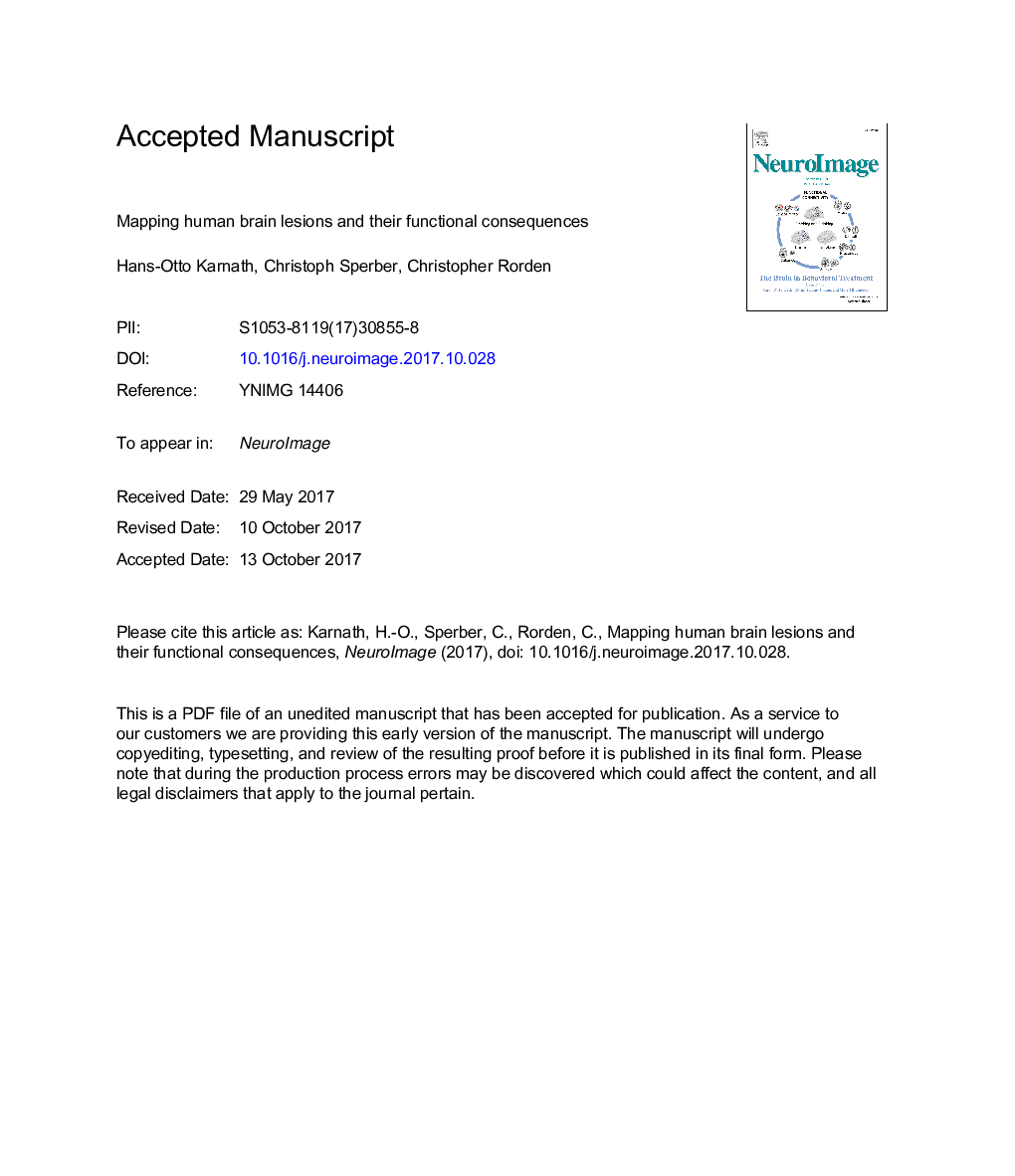| Article ID | Journal | Published Year | Pages | File Type |
|---|---|---|---|---|
| 8687394 | NeuroImage | 2018 | 38 Pages |
Abstract
Neuroscience has a long history of inferring brain function by examining the relationship between brain injury and subsequent behavioral impairments. The primary advantage of this method over correlative methods is that it can tell us if a certain brain region is necessary for a given cognitive function. In addition, lesion-based analyses provide unique insights into clinical deficits. In the last decade, statistical voxel-based lesion behavior mapping (VLBM) emerged as a powerful method for understanding the architecture of the human brain. This review illustrates how VLBM improves our knowledge of functional brain architecture, as well as how it is inherently limited by its mass-univariate approach. A wide array of recently developed methods appear to supplement traditional VLBM. This paper provides an overview of these new methods, including the use of specialized imaging modalities, the combination of structural imaging with normative connectome data, as well as multivariate analyses of structural imaging data. We see these new methods as complementing rather than replacing traditional VLBM, providing synergistic tools to answer related questions. Finally, we discuss the potential for these methods to become established in cognitive neuroscience and in clinical applications.
Keywords
Related Topics
Life Sciences
Neuroscience
Cognitive Neuroscience
Authors
Hans-Otto Karnath, Christoph Sperber, Christopher Rorden,
